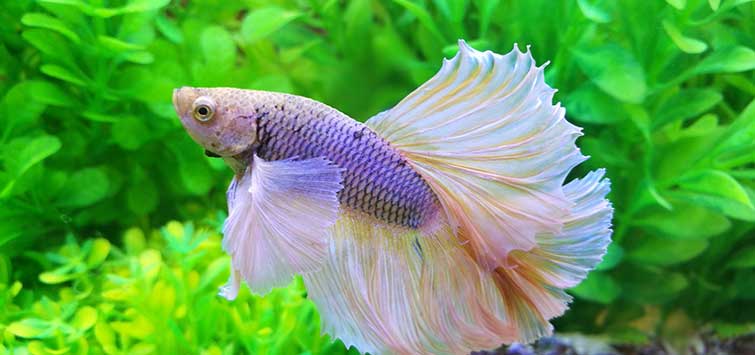Betta Fish Treatment: Important Tips for a Healthy and Pleased Animal
Betta Fish Treatment: Important Tips for a Healthy and Pleased Animal
Blog Article
Exactly How to Reproduce Betta Fish Effectively: Specialist Strategies and Insights for Hobbyists Looking to Broaden Their Betta Collection
Breeding Betta fish requires a nuanced understanding of genes and environmental problems, making it crucial for hobbyists to approach the procedure with both persistance and treatment. Creating an optimum reproduction atmosphere, selecting the ideal sets, and observing the details of their courtship habits are fundamental steps that can significantly impact the result. Moreover, the succeeding care of the fry is essential for guaranteeing their healthy growth. As we explore these key components, it ends up being clear that effective reproduction is not practically the first pairing however encompasses a more comprehensive method that values mindful factor to consider.
Comprehending Betta Fish Genetics
Understanding the genes of Betta fish is critical for effective breeding, as it influences attributes such as color, fin shape, and behavior. Betta fish exhibit a varied range of shades and patterns, greatly established by their hereditary make-up.
Along with pigmentation, fin morphology is one more substantial aspect of Betta genetics (betta fish). The sizes and shape of fins are affected by various genes, including those that establish whether the fins are brief, long, or veil-shaped. Understanding these hereditary variants aids breeders predict the phenotypic results of their children
Furthermore, behavioral traits such as aggressiveness and territoriality can additionally be affected by genetics. These actions play an important function in the reproducing procedure, as they can affect generating success and the total personality of the resulting fry. By thoroughly recognizing these hereditary principles, dog breeders can make informed decisions, ultimately improving their reproduction programs and attaining preferable results.
Preparing the Breeding Setting
Producing an optimal reproduction atmosphere is vital for the effective reproduction of Betta fish. The first step in preparing this setting is to select a suitable breeding container, preferably ranging from 5 to 10 gallons.
Following, take into consideration making use of a sponge filter or an air rock to supply mild water blood circulation without creating solid currents that can emphasize the fish. It is vital to mount plants or breeding cones to provide concealing areas and advertise comfort for the lady during the spawning process. Drifting plants, such as Java moss or water sprite, can also create a much more natural atmosphere while assisting in bubble nest building by the man.
Before presenting the reproducing pairs, make certain the water is conditioned and complimentary from dangerous chemicals, such as chlorine or hefty steels. betta fish. Regular water changes should be carried out to preserve optimum water quality, improving the chances of effective reproduction. With these preparations in position, the breeding setting will certainly support the health and wellness and well-being of both Betta fish
Selecting Reproduction Pairs
Choosing the appropriate breeding pairs is critical for accomplishing successful Betta fish reproduction. Healthy Betta fish display dynamic colors, clear eyes, and active actions.
Personality is another important consideration, as Betta fish are recognized for their aggressive nature. It is suggested to pick a man and lady that display compatible personalities to minimize stress and anxiety during the breeding process. A calm male can encourage a smoother courtship, while a lady that is also aggressive published here might interfere with the process.
Genetic background additionally plays a considerable role in the high quality of the children. Breeding fish that are genetically varied can minimize the risk of hereditary health issues and improve the overall vitality of the fry. It is useful betta fish to look into the lineage of both the man and woman, concentrating on preferable traits such as fin kind, shade patterns, and size.
The Reproduction Refine
The breeding procedure of Betta fish calls for cautious planning and focus to detail to guarantee an effective end result. It is important to prepare a suitable reproduction container, ideally a 5-10 gallon aquarium with a temperature level maintained at 78-80 ° F. The tank should be outfitted with a heater, filter (ideally sponge type to avoid solid currents), and plenty of marine plants for the female to hide.
Once the atmosphere is set, introduce the chosen breeding set to the storage tank, enabling them to adjust. Observe their actions; the man will present sophisticated courtship rituals, including flaring his fins and developing a bubble nest. If the female shows rate of interest, she will certainly display upright stripes suggesting preparedness for spawning.
When the woman is receptive, the pair will certainly participate in a breeding welcome, throughout which the male fertilizes the eggs. It is crucial to check their communications closely, as the man may come to be hostile. After generating, eliminate the woman to avoid prospective injury. The male will certainly often tend to the eggs, which typically hatch within 24-36 hours. Maintaining ideal water conditions during this duration is necessary for the development of healthy and balanced Betta fry.
Taking Care Of Betta Fry

Feeding Betta fry is important, as they require a diet regimen high in protein. They can be fed infusoria or fluid fry food, transitioning to carefully crushed top quality pellets as they expand. Feed small sections several times a day to urge healthy and Recommended Reading balanced growth without straining the container with leftover food.

As they develop, check their development closely and separate any kind of aggressive people to stop injury. By offering a supporting setting and proper nourishment, enthusiasts can effectively elevate Betta fry right into vibrant, healthy fish, ultimately enhancing their breeding endeavors.
Final Thought
Successful Betta fish breeding calls for precise interest to genetic choice, ecological problems, and take care of the fry. By understanding the genetics of Betta fish and preparing a suitable breeding atmosphere, enthusiasts can boost the possibilities of creating vivid, healthy and balanced spawn. Picking compatible breeding pairs and closely keeping an eye on the courtship and spawning procedures are vital. Offering optimum treatment for the fry ensures their healthy advancement, contributing to a successful Betta collection.
Report this page